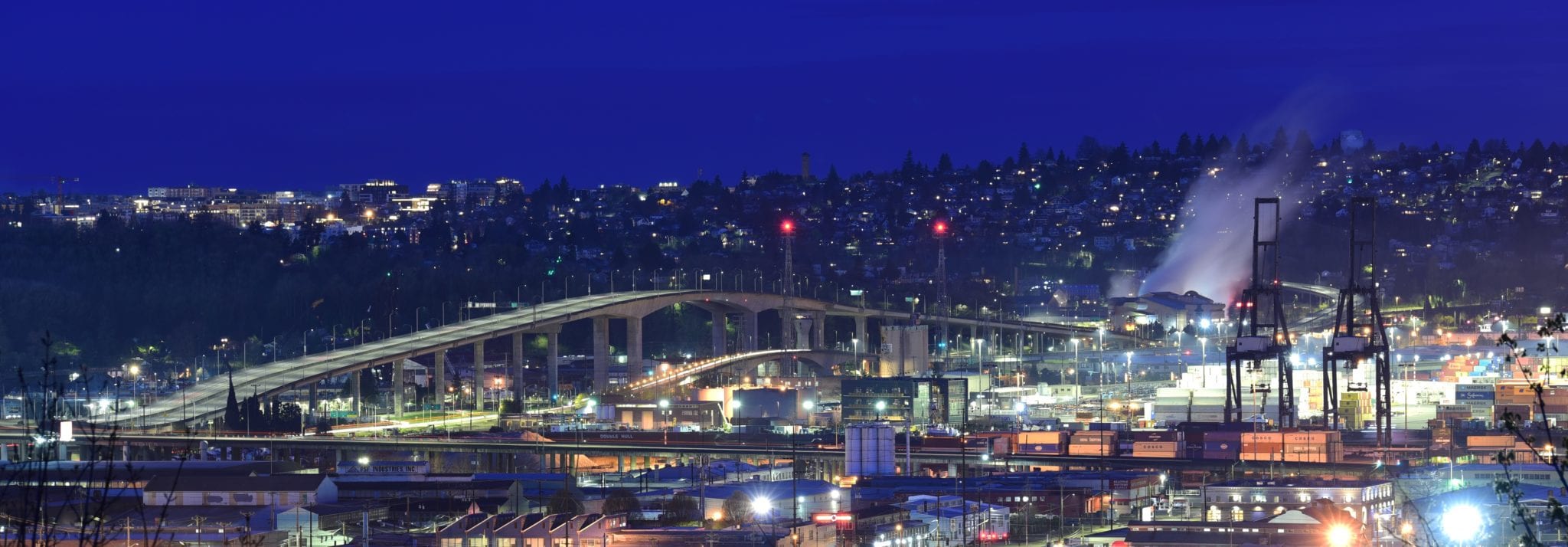
Since we closed the West Seattle High-Rise Bridge on March 23, we’ve been working tirelessly to determine next steps and share that information with everyone who uses and depends on the bridge.
Today we want to share what we know as of now and our plans moving forward as part of our commitment to consistent communication and transparency.
Watch Mayor Durkan and SDOT Director Sam Zimbabwe give an update on the West Seattle High-Rise Bridge Safety Project on April 15, 2020.
First and foremost, we want to be very clear that we need more information to determine the future of the West Seattle High-Rise Bridge.
We do not yet know if repair of the bridge is feasible technically or financially. If repair is feasible, it’s likely this would only restore up to an additional decade of life to the bridge. In either case, we will need to replace the West Seattle High Rise-Bridge much sooner than promised when it opened in 1984. Further, should repair prove feasible, under a “best case” scenario we do not anticipate traffic returning to the bridge in 2020 or 2021.
Despite these challenges, we are exploring all options to preserve the integrity of the bridge so that we can make the best decision possible for the residents of West Seattle and all who rely on this critical infrastructure. Right now:
- We’re working to stabilize the bridge and prevent further cracking by fixing bearings on Pier 18 and constructing shoring support structures
- We’re exploring long-term solutions to see if it’s feasible to repair the bridge
- We’re enlisting help from experts across the country and forming a Technical Advisory Panel
- We’re working with local transit agencies to keep people moving to and from West Seattle
- And above all, we’ll remain nimble and flexible as we adapt to new information and needs
Through it all, safety is our number one priority. That is why we’ve been closely monitoring the bridge since 2013; why we took immediate action to close the bridge on March 23; why we’ve restricted access for the Low Bridge to transit, freight, and emergency vehicles; why we’re installing intelligent sensor equipment to monitor any changes to the bridge and send real-time alerts 24/7; and, why safety will continue to be our north star as we work to reconnect West Seattle to the rest of the region over the Duwamish waterway.
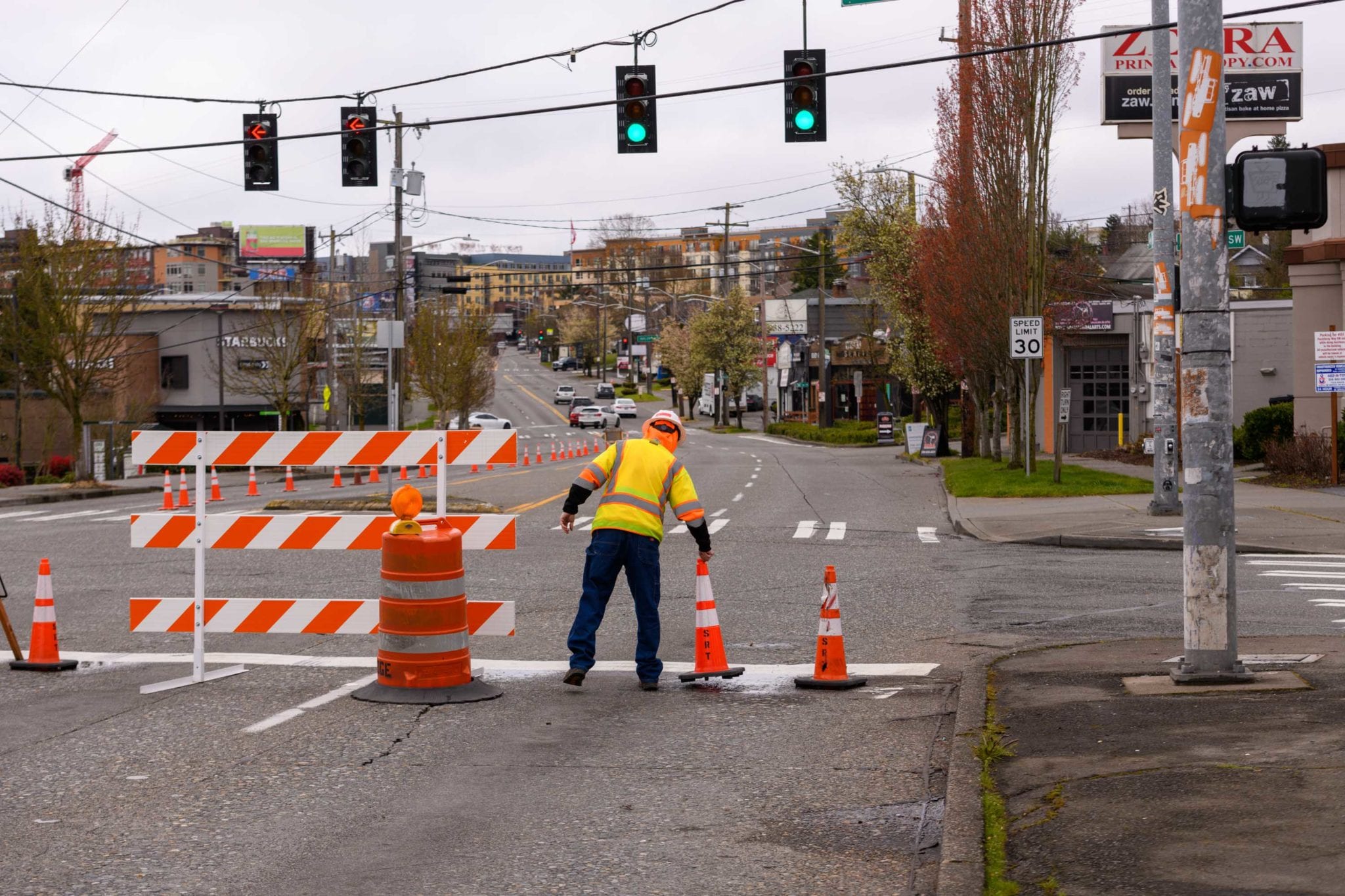
The first step to stabilize the bridge was to remove the weight of 100,000 vehicles a day.
Our crews have been out inspecting the bridge for new and growing cracks every day since March 23. They’ve seen that cracks continue to grow, but at a slower rate than before. This is good news that confirms immediately removing traffic from the bridge was a necessary step.
The next step is to make repairs on one of the support structures on the west side of the bridge, also known as Pier 18, to further slow or stop the cracking and preserve the integrity of the bridge.
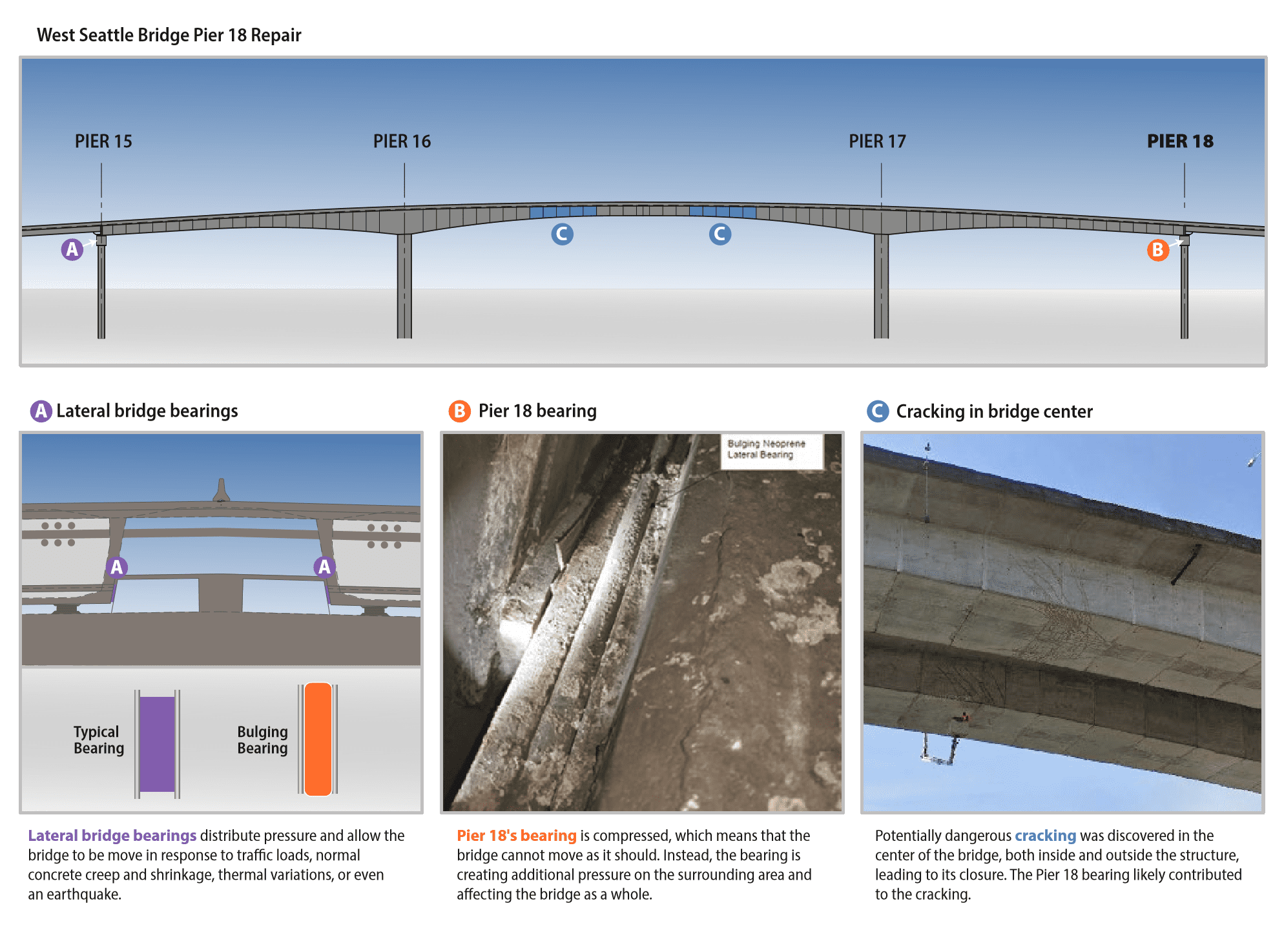
Pier 18 needs bearing replacements. Bridge bearings sit between the bridge’s roadway and the support piers holding it up. Bearings allow the bridge to move in response to traffic loads, normal concrete creep and shrinkage, thermal variations, or even an earthquake.
Bearings located at Pier 18 of the West Seattle High-Rise Bridge are currently compressed and bulging, indicating that they’re “restrained.” Because of the restrained bearing, the structure can’t move as a bridge typically should. Instead, the bearing is creating additional pressure on the surrounding area and affecting the bridge as a whole. This problem has likely contributed to the potentially dangerous cracking in the center of the bridge.
Over the next few months, bridge engineers will work with the contractor to determine the best way to “release” the bearings. This will likely involve building a temporary platform to perform the work and then using specialized equipment to precision-demolish the concrete surrounding the bearing, place the new bearings, and then pour the new concrete. This will release some of the pressure that the bridge is experiencing and allow it to move as it was designed.
The next step will be to install temporary external support structures called shoring.
Shoring is necessary to help support and stabilize the bridge as we continue to assess repair feasibility, timeline, and costs. After we complete the Pier 18 repairs, this will add additional support to ensure the bridge doesn’t crack under its own weight elsewhere.
We’ll need to obtain customized and unique equipment to shore the bridge. Because this takes a long time to both design and create, we’ll order this equipment as soon as possible so that it will be ready to install as the Pier 18 repair work is comes to an end in late 2020.
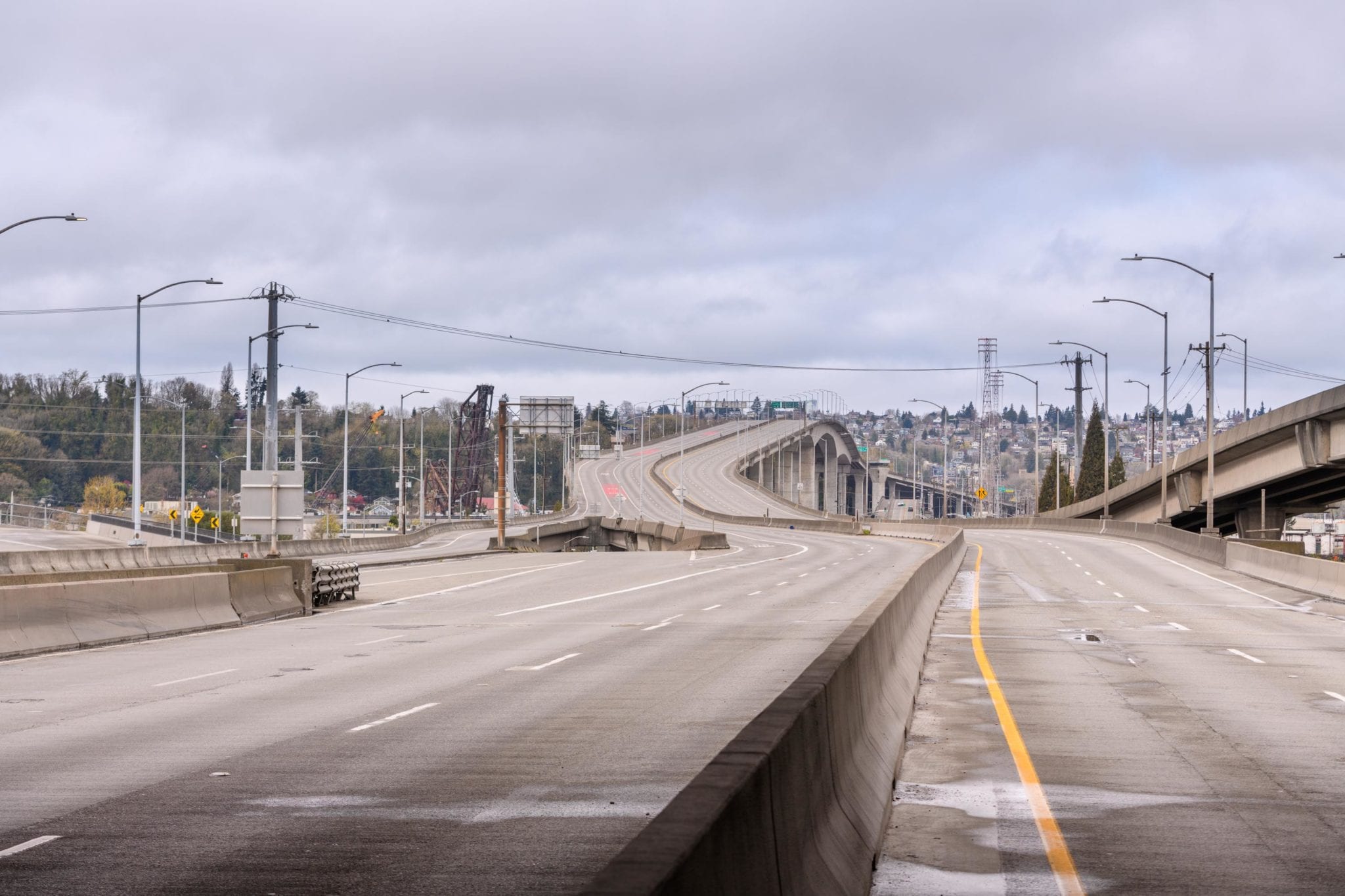
The future of the bridge remains unclear.
The Pier 18 repairs and shoring are to stabilize the bridge right now. It’s still not known if repairing the bridge back to function is possible.
If repairs are feasible, the best-case scenario is that they will provide up to 10 years of additional use, which means we’ll have to replace the West Seattle High-Rise Bridge much sooner than it’s original, anticipated lifespan.
Everyone rightfully wants to know, “when will the bridge reopen?” and it’s frustrating that we can’t answer this question today – in part because we don’t have all the information we need to know that reopening the existing bridge will be possible. What we can say, however, is that it’s highly unlikely that the bridge will be open to traffic in 2020 or 2021.
We are at 0 percent design, and each step will impact what’s feasible and how long it will take. For example, the Pier 18 stabilization efforts will shed light on the broader condition of the bridge. We’ll gain greater clarity as we complete this and shoring process.
Our plans are guided by outside experts.
The deterioration of the West Seattle High-Rise Bridge and the needed short-term repairs are unique and complex. We’re forming a Technical Advisory Panel of experts from across the county to help bolster our actions moving forward. They will provide independent qualitative review and offer insight, constructive feedback, and validation as needed. The panel will be made up of professionals who are experts in bridge design and construction, geotechnical, marine, and maritime.
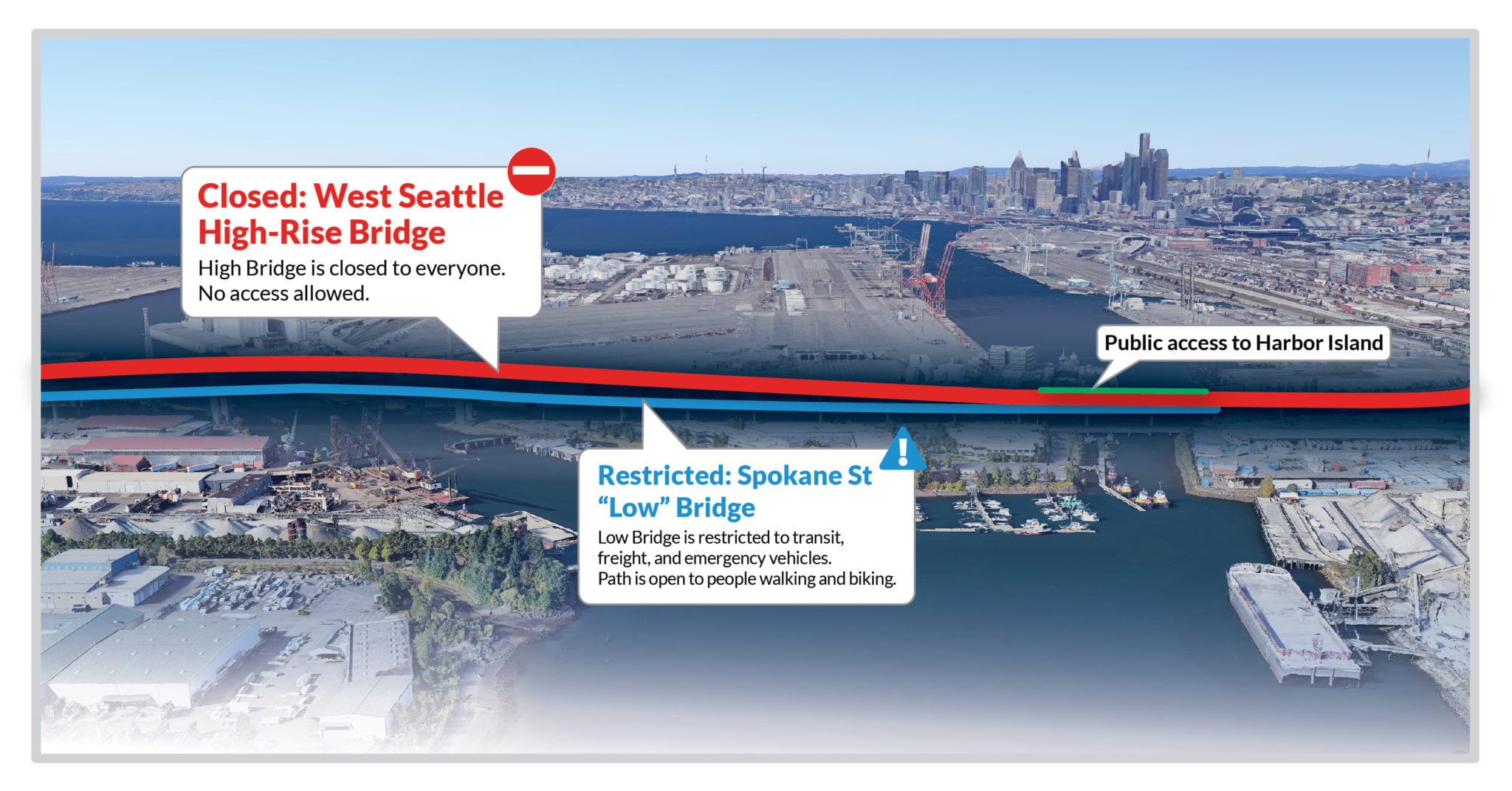
People living and working in West Seattle need reliable access across the Duwamish waterway.
The closure of the West Seattle High-Rise Bridge is an inconvenience for everyone who lives and works in West Seattle and we are working diligently to determine a permanent solution.
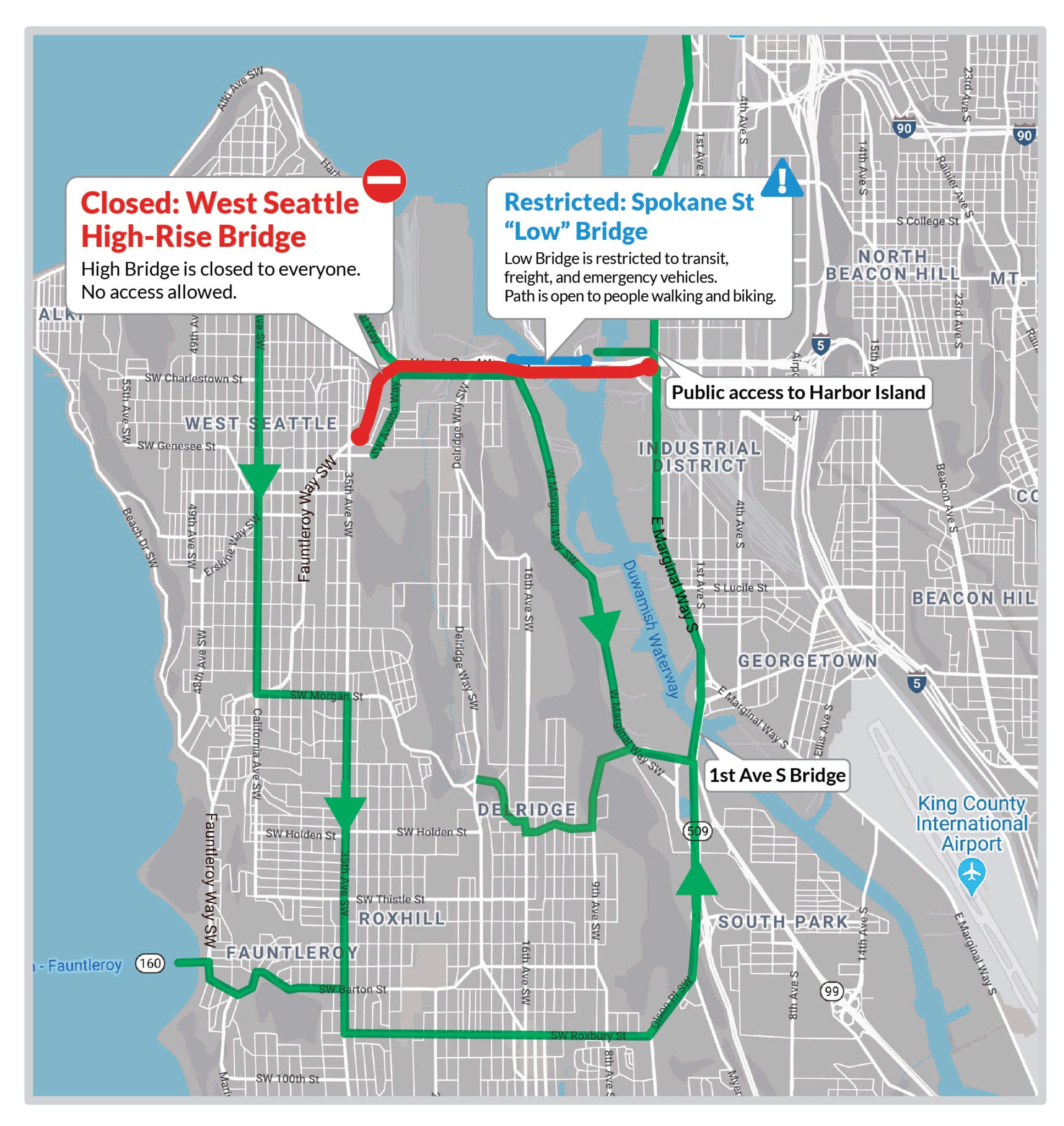
Today, during the Stay Home, Stay Healthy order, our reroutes to the 1st Ave S Bridge are sufficient with our below-average traffic levels. Once the stay home orders are lifted, however, and more people return to regular commute routinesand other activities, there will be a greater strain on our arterial roads.

King County Metro is a steadfast partner of ours, serving West Seattle with hundreds of bus trips a day across the bridges. We’ve already been working with them to plan the reroutes of buses from the high to low bridge and provide transit priority on both approach streets and the Low Bridge to maintain travel times for riders.
We’ve installed traffic monitors at 6 locations along the detour routes, adjusted timing at 12 intersections, added red bus lanes approaching the Low Bridge, and installed a new traffic signal at the intersection of Highland Park Way SW and SW Holden St.
The 5-legged intersection on the west side of the Low Bridge is an ongoing challenge. We’ve already adjusted the green light timing to move more people and upgraded the signal system so we can change timing remotely from our traffic control center instead having to be there in-person. Next we’re looking at pavement repairs to make the ride smoother for everyone and keep traffic flowing during this time of extra pressure on the Low Bridge approaches.
We continue to monitor the reroutes and will make more adjustments as needed. Thank you for your patience, understanding, and resilience. The bridge closure has the biggest impact on West Seattle residents, and we’re working hard to get you where you need to go.
Sign up to receive West Seattle High-Rise Bridge project update emails.
Visit our West Seattle High-Rise Bridge website to sign up for periodic emails to stay up-to-date on the bridge. On the website you will also be able to see frequently asked questions, view inspection reports, and find links to our West Seattle Bridge blogs.